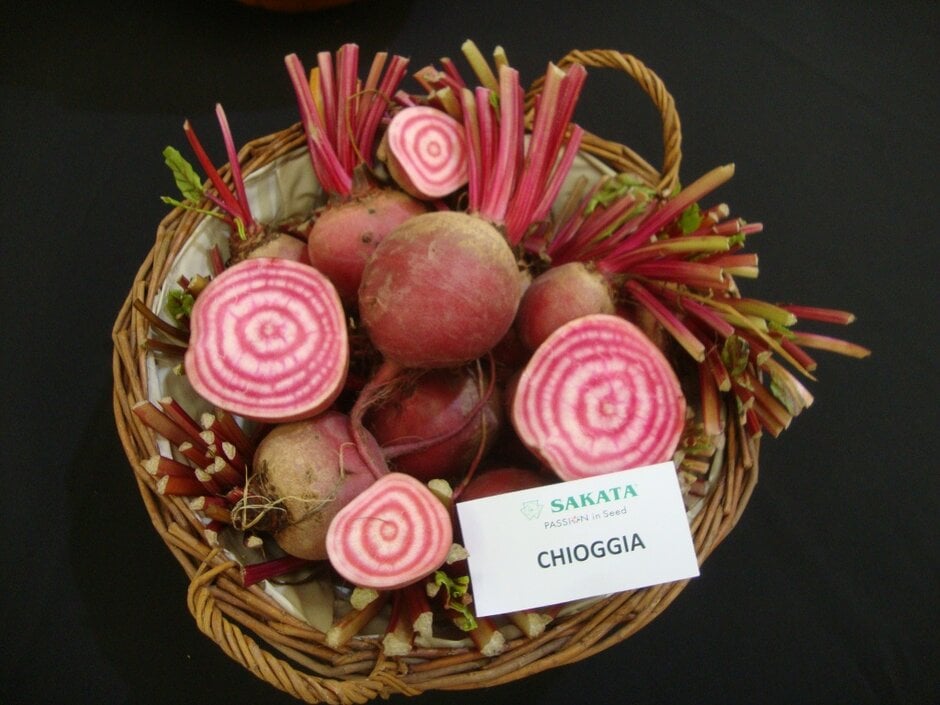Beta vulgaris 'Chioggia'
beetroot 'Chioggia'
A reliable annual vegetable grown for its attractive, edible, crimson coloured taproots that have white and red concentric rings when cut transversely. Very tasty, perfect for roasting and showing off the inner rings
Size
Ultimate height
0.1–0.5 metresTime to ultimate height
1 yearUltimate spread
0.1–0.5 metresGrowing conditions
Moisture
Moist but well–drained, Well–drainedpH
Alkaline, NeutralColour & scent
| Stem | Flower | Foliage | Fruit | |
| Spring | Green | |||
|---|---|---|---|---|
| Summer | Green | Green | ||
| Autumn | Green | |||
| Winter |
Position
- Full sun
Aspect
South–facing or West–facing
Exposure
Sheltered Hardiness
H3Botanical details
- Family
- Amaranthaceae
- Native to GB / Ireland
- No
- Foliage
- Deciduous
- Habit
- Clump forming
- Genus
Beta can be annual, biennial or perennial plants, often with rosettes of basal leaves and thick, fleshy roots. The genus includes a range of wild species, as well as cultivated food crops such as beetroot, chard and sugar beet
- Name status
Accepted
How to grow
Cultivation
Grow in fertile, well drained, alkaline soil in full sun. Dig over bed in autumn and add well rotted manure if humus content is low. Sow direct between March and July into drills 2.5cm deep and lighly rake over with soil. Thin out seedlings to 10cm spacings. See beetroot cultivation for more information
Propagation
Propagate by seed. See sowing vegetable seeds
Suggested planting locations and garden types
Pruning
No pruning required. Harvest roots when they are more than 5cm in diameter
Pests
May be susceptible to aphids, flea beetles and mangold fly (beet leaf miner)
Diseases
May be susceptible to beetroot heart rot, black leg and leaf spot
Love gardening
Sign up to receive regular gardening tips, inspiration, offers and more
View our Privacy Policy
Get involved
The Royal Horticultural Society is the UK’s leading gardening charity. We aim to enrich everyone’s life through plants, and make the UK a greener and more beautiful place.

